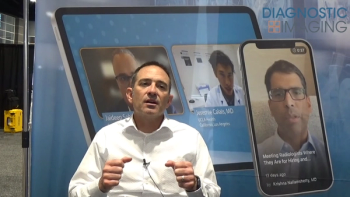
Repeated Exposure to GBCA Shows Increased Signal Intensity in Children
Children who repeatedly undergo MRI with GBCA experience higher levels of signal intensity.
Children who are repeatedly exposed to linear gadolinium-based contrast agent (GBCA) show increased signal intensity (SI), according a study published in
Researchers from the University of Colorado Children’s Hospital, in Aurora, performed a retrospective study to determine if repeated exposure of the pediatric brain to a GBCA was associated with an increase in SI relative to that in GBCA-naive control subjects at unenhanced T1-weighted MR imaging.
Forty-six pediatric patients who had undergone at least three GBCA-enhanced MR examinations (30 patients for two-group analysis and 16 for pre- and post-GBCA exposure comparisons) were evaluated, as were 57 age-matched GBCA-naive control subjects. The subjects ranged in age between 31 days and 18 years.
The SI in the globus pallidus, thalamus, dentate nucleus, and pons was measured at unenhanced T1-weighted MR imaging. Globus pallidus–thalamus and dentate nucleus–pons SI ratios were calculated and compared between groups and relative to total cumulative gadolinium dose, age, sex, and number of and mean time between GBCA-enhanced examinations.[[{"type":"media","view_mode":"media_crop","fid":"51404","attributes":{"alt":"Contrast","class":"media-image media-image-right","id":"media_crop_8279891464986","media_crop_h":"0","media_crop_image_style":"-1","media_crop_instance":"6337","media_crop_rotate":"0","media_crop_scale_h":"0","media_crop_scale_w":"0","media_crop_w":"0","media_crop_x":"0","media_crop_y":"0","style":"height: 105px; width: 170px; border-width: 0px; border-style: solid; margin: 1px; float: right;","title":"©sfam photo/Shutterstock.com","typeof":"foaf:Image"}}]]
The results showed that patients who had undergone multiple GBCA-enhanced examinations had increased SI ratios within the dentate nucleus (mean SI ratio: 1.007 ± 0.0058 for GBCA-naive group and 1.046 ± 0.0060 for GBCA-exposed group; mean SI ratio for pre- and post-GBCA comparison: 0.995 ± 0.0062 for pre-GBCA group and 1.035 ± 0.0063 for post-GBCA group) but not the globus pallidus (mean SI ratio for two-group comparison: 1.131 ± 0.0070 for GBCA-naive group and 1.014 ± 0.0091 for GBCA-exposed group [P = .21]; mean SI ratio for pre- and post-GBCA comparison: 1.068 ± 0.0094 for pre-GBCA group and 1.093 ± 0.0134 for post-GBCA group [P = .12]).
There was a significant correlation between dentate nucleus SI and total cumulative gadolinium dose (r = 0.4), but not between dentate nucleus SI and patient age (r = 0.23), sex (mean SI ratio: 1.046 ± 0.0072 for boys and 1.045 ± 0.0110 for girls), number of contrast-enhanced examinations (r = 0.13), or time between contrast-enhanced examinations (r = −0.06).
The researchers concluded that SI in the pediatric brain increases on unenhanced T1-weighted MR images with repeated exposure to a linear GBCA.
Newsletter
Stay at the forefront of radiology with the Diagnostic Imaging newsletter, delivering the latest news, clinical insights, and imaging advancements for today’s radiologists.




























